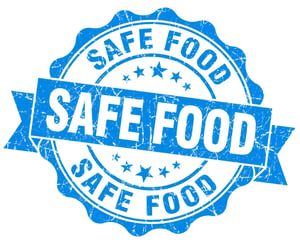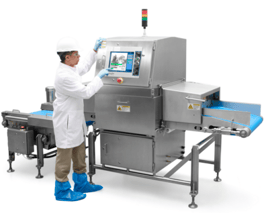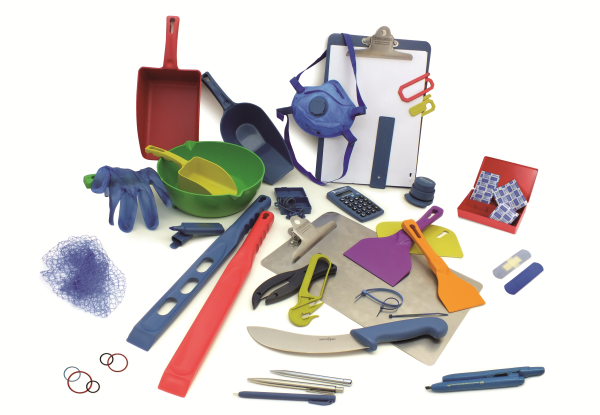 Non-GMO, organic food is picking up in popularity among consumers, with many food producers doing everything they can to ensure that they can apply the “certified organic” label to their products.
Non-GMO, organic food is picking up in popularity among consumers, with many food producers doing everything they can to ensure that they can apply the “certified organic” label to their products.
To meet organic standards for plant-based products, they have to be free of any GMO modifications, and specific pesticides & fertilizers may not be used. Livestock also have to be fed specific diets and meet several other requirements regarding immunizations, exercise time, and more.
Organic-obsessed consumers are hungry for safer, healthier food. However, working with organic food products may entail some unique food safety challenges compared to working with GMO-based foods.
How can you ensure safer food while maintaining organic status during production? Here are a few tips to help you out:
Tip 1: Expand Your Contaminant Detection Capabilities
In mass farming practices, the use of pesticides serves a very specific purpose—to keep pest insects from infesting crops and destroying them. Without the use of pesticides, insect infestations of plants are much more likely to occur.
Very few customers like to find foreign bodies in organic salads. This is one reason why it’s very important to be able to quickly and reliably detect dense contaminants in organic fruits and vegetables.
By expanding your contaminant detection capabilities with top-of-the-line material discrimination X-ray (MDX) technology technology, you are better equipped for detecting organic contaminants in your plant-based products. Leading edge X-ray inspection systems will provide the ability to detect dense contaminants such as:
- Metals
- Glass
- Stones
- Bones (including chicken and turkey bones)
- High density plastic / rubbers
- Etc.
Best of all, x-ray product inspection technology will not affect your product’s organic status.
 Tip 2: Add Extra Inspection Equipment to Your Ingredient Inflow
Tip 2: Add Extra Inspection Equipment to Your Ingredient Inflow
Another way to make your organic products safer and limit waste is to add more product inspection equipment at the ingredient inflow of your production line. By spotting contaminated product early, you can take it out of the production flow before it gets mixed with uncontaminated products.
This helps you increase food safety for your organic food production.
Tip 3: Inspect Your Production Area for Potential Sources of Contamination
Every food manufacturer should regularly check their production area for potential contaminant sources regardless of whether they make organic or GMO-based products.
Inspections should be done at least once a quarter, and after any major revisions to the production process—such as when new equipment is added.
Things to check for include:
- Dissimilarities in cleaning processes for equipment (complicates cleaning and increases sanitary hazard risk)
- Breakable processing tools
- Loose items present in environment or on employees (pens, clipboards, etc.)
- Potential pooling points for liquids/product
- Integrity of structure (no holes in ceilings, paint is intact & food safe, etc.)
Routinely checking for contaminant sources and remediating them as soon as possible is key for keeping your organic food safe and contaminant-free.
4: Use Specially-Designed Detectable Rubber & Plastic Components
 Whenever you use a processing tool, there is a risk of that tool breaking and leaving shards of itself in your food. If not detected right away, these shards could make it into the final packaged product.
Whenever you use a processing tool, there is a risk of that tool breaking and leaving shards of itself in your food. If not detected right away, these shards could make it into the final packaged product.
Very small shards of plastic and rubber can be nearly impossible to detect, even with the best product inspection systems. This is why using components designed specifically for high detectability is a must.
X-ray detectable rubber and plastic parts made of highly visible materials designed to break off in large chunks are much less likely to go unnoticed by your x-ray product inspection—increasing the safety of your organic food products.
Other tools, such as pens and clipboards carried by employees, should also be made of detectable plastic or rubber components just in case they accidentally fall into the production line.
5: Carefully Vet Your Ingredient Sources
Because there are so many restrictions on what can and cannot be done with “organic” food ingredients from start to finish, it is crucial that you carefully vet your ingredient providers to make sure that their products meet the organic food labeling standard.
Beyond checking the farm’s practices for growing vegetables or raising livestock, you may want to verify the overall quality of the ingredients that each source sends to you. If you have product inspection equipment at your ingredient inflow to catch contaminants early, this can be relatively easy.
Tracing back contaminated food to the source helps you independently evaluate your suppliers and identify when one has a consistent problem meeting your quality requirements.
Making sure that your food can meet the requirements for the “certified organic” label while maximizing quality and safety can be tough. But, with some planning and the right tools, you can make meeting this challenge look easy.
Learn how you can use x-ray inspection to increase safety and quality for your food today!



 Tip 2: Add Extra Inspection Equipment to Your Ingredient Inflow
Tip 2: Add Extra Inspection Equipment to Your Ingredient Inflow
